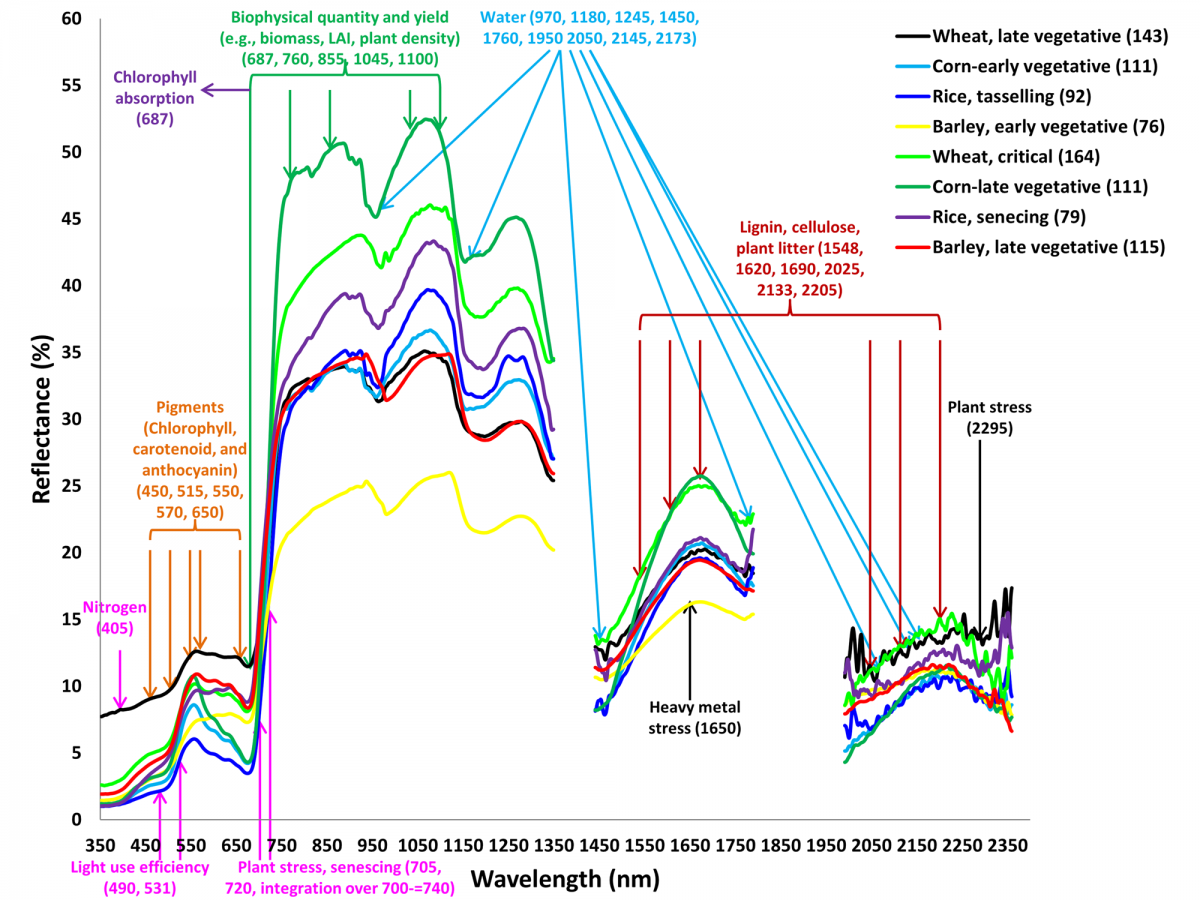A new book “Hyperspectral Remote Sensing of Vegetation” (Publisher: Taylor and Francis), edited by USGS Research Geographer Dr. Prasad S. Thenkabail, summarizes the advances made over 40+ years in understanding, modeling, and mapping terrestrial vegetation. The advent of spaceborne hyperspectral sensors (e.g., NASA’s Hyperion and others) and the advances made in processing these enormous datasets have generated tremendous interest in advancing hyperspectral applications to large areas. Topics discussed in the book include: 1) hyperspectral sensors and their characteristics, 2) methods of overcoming the Hughes phenomenon, 3) characterizing biophysical and biochemical properties, 4) advances made in using hyperspectral data in modeling evapotranspiration or actual water use by plants, 5) study of phenology, light use efficiency, and gross primary productivity, 6) improved accuracies in species identification and land cover classifications, and 7) applications in precision farming. A detailed overview of the book is found at: http://www.crcpress.com/product/isbn/9781439845370. Discussions presented in this book will advance research and application of current and future hyperspectral data systems.
The best hyperspectral narrowbands to study vegetation, agriculture in particular, is in the 400-2500 nm spectral range (Thenkabail et al., 2013).
http://www.amazon.com/Hyperspectral-Remote-Sensing-Vegetation-Thenkabail/dp/1439845379


